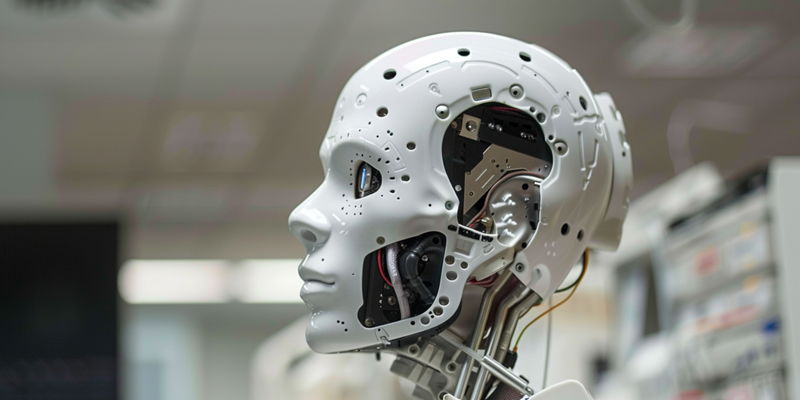Robots have traditionally relied on complex algorithms and sensors to navigate through complicated and dynamic environments. However, researchers at XYZ University have developed a groundbreaking soft robot that has the ability to navigate without a brain. This new innovation, composed of ribbon-like liquid crystal elastomers, opens up the possibility for more efficient and adaptable robotics.
Composition of the new soft robots: Ribbon-like liquid crystal elastomers
The soft robots developed by the research team are composed of ribbon-like liquid crystal elastomers. These elastomers possess unique properties that allow them to flex and reshape in response to external stimuli. This gives the soft robot the flexibility and versatility required for navigating complex surroundings.
Design of the new robot: Two separate halves for improved functionality
Unlike the previous iteration of the soft robot, the new design features two separate halves. Each half has its own set of propulsion mechanisms, allowing for more precise and controlled movements. This design gives the robot improved functionality and maneuverability, making it better suited for a wide range of tasks.
Asymmetrical shape and its impact: One end of the robot applies more pressure to the ground
One of the key features of the new soft robot is its asymmetrical shape. Due to this asymmetry, one end of the robot applies more pressure on the ground than the other end. This design enables the robot to turn without having to come into contact with an object. It takes advantage of the difference in friction and pressure exerted by each end, allowing for smooth and efficient turns.
Concept behind the robot: The ability to maneuver without making contact with objects
The concept behind the new soft robot is fairly simple, yet ingenious. By taking advantage of its asymmetrical design, the robot can execute turns without needing to physically interact with any object. This makes it more agile and allows it to navigate through cluttered and confined spaces with ease.
Testing the robot’s capabilities: Squeezing through narrow spaces and navigating challenging mazes
To evaluate the robot’s capabilities, the researchers conducted tests to examine its ability to navigate through narrow spaces and solve complex mazes. The results were impressive, demonstrating that the asymmetrical soft robot design could squeeze through spaces narrower than its body size. Additionally, it exhibited exceptional problem-solving skills by effectively navigating challenging mazes.
Performance evaluation: Testing the robot on different surfaces, such as sand and metal
To further assess the robot’s performance, the research team conducted experiments on various surfaces. The soft robot was tested on both sand and a metal surface to evaluate its adaptability and stability. It successfully maneuvered through both terrains, showcasing its potential for real-world applications.
Potential applications: Innovative approaches to soft robot design for energy harvesting
This groundbreaking development in soft robot design opens up exciting possibilities for future applications. One particularly promising area is energy harvesting. Soft robots, such as this brainless design, could potentially harvest heat energy from their environment, enabling them to operate for extended periods without the need for traditional power sources. This could revolutionize the field and lead to the development of highly efficient and sustainable robotic systems.
Publication details: The study titled “Physically Intelligent Autonomous Soft Robotic Maze Escaper”
The impressive findings of this research have been published in the esteemed journal Science Advances. The study, titled “Physically Intelligent Autonomous Soft Robotic Maze Escaper,” provides detailed insights into the design, capabilities, and potential applications of the brainless soft robot. This publication serves as an important contribution to the field of robotics and paves the way for further advancements in soft robot design.
Funding: Support provided by the National Science Foundation through grants
This groundbreaking research received crucial support from the National Science Foundation through grants. Their financial backing allowed the research team to explore innovative approaches to soft robot design and develop the brainless soft robot with its exceptional capabilities. The funding demonstrates the importance of investing in cutting-edge technologies that have the potential to transform various industries.
In conclusion, the development of this brainless soft robot marks a significant milestone in the field of robotics. Its unique composition, asymmetrical design, and ability to navigate dynamic environments without a brain showcase the potential of soft robots for a wide range of applications. With further advancements and refinements, these soft robots could revolutionize industries such as healthcare, exploration, and manufacturing. The future of robotics is undoubtedly soft and intelligent.

